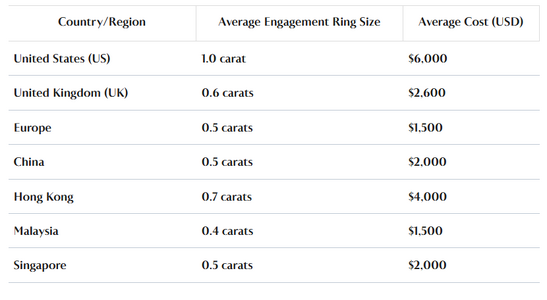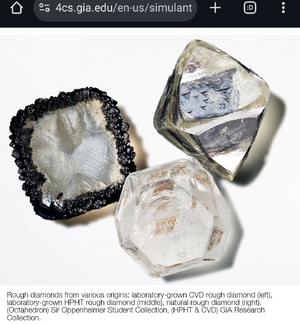- Joined
- Jul 27, 2009
- Messages
- 4,111
Brian
If GIA is calling LGD’s “synthetic”, do you think they are throwing shade to the mined diamond industry? To me the word synthetic has a negative connotation.
When you think about it, the mined diamond industry butters GIA’s bread by sending diamonds to grade, and make money. The fewer the diamonds sent for grading the less GIA makes. Would you happen to know if GIA is taking a hit on this LGD business? I also read that GIA get only about 10% of LGD to grade.
The natural diamond business has been key to GIA's success all along. And diamond manufacturers and retailers are their key consituencies, as you correctly note. But their not-for-profit mission is education and consumer protection. So there is always a push/pull. GIA has always been careful and conservative (translated: slow moving!) in making sure they achieve the right balance. That balance was certainly complicated by some of their natural diamond constituencies also getting into the LGD business.
Calling LGDs "synthetic" is nothing new for GIA. Calling synthetic "lab grown" is new! And I think that was a move to align with the market as a whole (business and consumers), and not the natural diamond business in particular.
GIA is a research organization doing a lot of advanced science. Scientists tend to use scientific terminology, not marketing terminology. But the new language is a recognition that they do not operate in a vacuum.
Every business, even not-for-profit businesses, has to make judgements and predictions of where markets will go. In times of great change, many of them will turn out wrong. The extent to which GIA is going to gear themselves for grading LGD has been and continues to be one of those issues. Being that their constituencies consisted of many in the natural diamond realm, they were not aggressive in embracing LGD grading to begin with. And they have a higher cost structure than other labs, particularly labs that ARE aggressively embracing LGD and can continue to add value even as the price of the product falls. The amount of business GIA has done in issuing grading reports for LGD is relatively small compared to their overall business, and to compete for market share they would have to lower their fees below what is rational for their bottom line. There is also probably a sense that the trajectory of LGD may eventually migrate out of the traditional grading space for all the major labs.
I don't think GIA is throwing shade on anyone. I think they are doing what they have always done by trying to balance their various roles in the market and make sure that their business is sustainable.
But nobody is immune from making mistakes in judgment or failing to predict the future with pinpoint accuracy in a world with so many rapidly moving parts.






300x240.png)